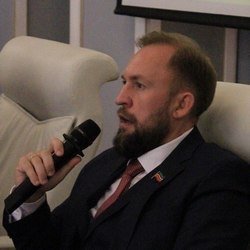Register of microobjects of SMEs: why entrepreneurs getting less in Tatarstan?
Analytical service of Realnoe Vremya studied the state of small and medium-sized businesses in the republic

The national project “Small and medium-sized entrepreneurship and support for entrepreneurial initiative”, launched in 2019 and designed for 5 years, has led to a rapid growth of microenterprises and the self-employed. In Tatarstan, the number of microbusinesses has grown by almost 10 thousand since 2018 — up to 160,247. They are the main backbone of small and medium-sized businesses in the republic today. At the same time, the number of medium-sized companies has decreased by 48 over the years, and small — by 1,414. The number of employed in SMEs has also decreased. What factors influenced businesses in the republic and why the national project did not lead to the growth of small and medium-sized enterprises — in the review of the analytical service of Realnoe Vremya.
A mountain gave birth to a mouse
From 2018 to 2023, the number of small and medium-sized enterprises in Tatarstan increased by 5,4% — from 158,006 to 166,520. However, this growth is provided by the creation of microenterprises, the number of which has increased by 6,6% — from 150,271 to 160,247. The number of medium-sized enterprises over these years has decreased by 8,9% — from 541 to 493, and the number of small enterprises has fallen by 19,7% — from 7,194 to 5,780.
The strongest decline in small and medium-sized businesses is expected to occur in 2020: then, over the year, the number of SMEs decreased by 2,7% — from 158,048 to 153,733. In 2021-2022, the number of organisations, according to the Federal Tax Service of Russia, grew, but the number of small enterprises continued to decline steadily.
The average number of employees at SMEs in Tatarstan has fallen by 12,586 people since 2018 — from 447,804 to 435,218. A significant drop occurred in 2021 — then the number of employees in small and medium-sized businesses decreased by 29,745 people at once and then in 2022 increased by 23,218. Formally, the previous year showed an increase in the number of employed in SMEs, but in fact, the indicators of 2022 did not even return to the levels of 2020.
25 million entrepreneurs by 2024
The national project “Small and medium-sized entrepreneurship and support for individual entrepreneurial initiative” was launched in 2019 and was supposed to facilitate the access of small and medium-sized businesses to financial resources, including concessional financing. Also, the KPI of the national project spelled out an increase in the number of people employed in small and medium-sized enterprises to 25 million people. As of March 10, according to the Federal Tax Service, 15,2 million SMEs work in the country, not including individual entrepreneurs who do not attract employees.
In Tatarstan, as of March 10, the number of small and medium-sized businesses exceeded 168 thousand, which is by 1,6% more than last year's total. “The growth of business activity indicates favourable conditions for doing businesses, created, among other things, thanks to the implementation of the Small and Medium-sized Entrepreneurship national project," the website of the Republican Ministry of Economy says.
At the same time, if the Federal Tax Service does not take into account the self-employed and sole proprietors without employees in its register, then the Ministry of Economy of the Republic of Tatarstan counts everyone, therefore, the number of people employed in SMEs, according to the department, has almost reached 800 thousand people. Of these, 247 thousand are self-employed citizens.
Deputy Prime Minister of the Republic of Tatarstan — Minister of Economy of the Republic of Tatarstan Midkhat Shagiakhmetov at a joint meeting of the operational headquarters and the board of the Ministry of Economy of the Republic of Tatarstan stated that the department plans to increase the number of SMEs in 2023 to 170 thousand and increase the number of people employed in SMEs to 810 thousand.
To achieve these objectives, “taking into account the remaining risks”, according to the minister, effective implementation of financial support measures, creation of conditions for businesses to enter new markets, creation of favourable conditions for an easy start, and support for social and innovative entrepreneurs, as well as the development of the institute of self-employed and municipal industrial parks are necessary.
Going bankrupt and starting from scratch
The main reason for the decline in the share of small enterprises is the outstripping growth in turnover of large businesses, which is associated with an increase in commodity prices in 2022, says Yaroslav Kabakov, the director for strategy at IC Finam:

At the same time, the number of SMEs is less significant for the economy than the number of employees. It is the employees who create the added value of the enterprise, Rustem Shayakhmetov, an economist, PhD, head of R-Invest, emphasises.
“In Tatarstan, the average number of employees at small and medium-sized businesses, according to Rosstat, in January-September 2022 amounted to 354,2 thousand people, in 2016 there were 387,1 thousand, that is, the number of employees decreased by 8,6%. In the Volga Federal District for the specified period, the reduction was 15,4%, in Russia — 5,7%," Rustem Shayakhmetov cites his data. “In Tatarstan, the reduction in the number of employees at small and medium-sized businesses is proceeding at a faster pace than the average in Russia.”
The number of employees in Tatarstan as of January 1, 2023 amounted to 1,99 million people, thus, the share of employees employed in small and medium-sized businesses is about 22% (if we rely on the data of the Federal Tax Service of Russia on the number of employees in the amount of 435,218 people). This indicates the low impact of SMEs on the economy of the republic. In the world, depending on the structure of the economy, this figure is 30-50%, says Shayakhmetov.

“The authorities need to create conditions for increasing business profitability, and not try to introduce some benefits and preferences at the expense of taxpayers," Shayakhmetov believes. “You can't help all business structures, they have to solve their own problems. It is necessary to eliminate administrative barriers, form innovation clusters, and increase domestic demand, primarily at the expense of the population. Unfortunately, the authorities are not doing this properly.”
“Businesses were forced to rebuild”
“The increase in SMEs occurred due to that in 2019, an experimental regime for testing the tax on professional income was introduced in four regions of the Russian Federation. In 2020, it was introduced throughout Russia. Many entrepreneurs have adopted this form of doing business, so a large number of former employees have flowed into the self—employed, and new entrepreneurs who used to be on the gray market have appeared," Mikhail Kuznetsov, the deputy of the Kazgorduma, commissioner for entrepreneurship development in Kazan, clothing manufacturer Tolstoywear, believes. “These are event organisers, photographers, manicure specialists, designers, tutors. These people have moved to legal field. Self-employed citizens have given great growth. The increase in the number of SMEs is mainly due to them.”

The national project, according to him, does not imply the opening of factories and huge factories: “Small businesses start small, we open small production facilities, small shops, we sell services," he explains. “Medium and large businesses need capital. This occurs a little later. The national project is aimed at increasing the number of microenterprises and small enterprises, including the self-employed.”
From the stage of creating any businesses, it is necessary to move on to the growing
“There is a saying in business: “What you measure, it grows.” For example, you set a goal to “increase revenue”, began to count it in detail, pay all attention to it — so it will grow. You set a goal to “increase profits” — everything may turn out differently. It's about the same here," says Ruslan Serazetdinov, entrepreneur, CEO of Khoroshaya Istoriya content bureau, owner of Udashchivy Biznes telegram channel. “We have set a goal for micro — babies are growing. We would have set the goal of “increasing the capitalisation of Tatarstan companies” or “increasing the profits of Tatarstan enterprises” — there would have been completely different decisions, actions and results. This may has a distortion.”

“So, perhaps, from the stage of 'creating any businesses', which we are currently seeing in the Republic of Tatarstan, it's time to think about the transition to 'cultivation'," Serazetdinov suggests. “And these are training, professional development programmes for entrepreneurs, scholarships and grants for conditional MBAs. So that the conditional seller of Tatar tea on the marketplace learns business not 'in practice', but systematically. Then, maybe, they will become bigger.”
There are conditions for starting, but not for development
“The reduction in the number of small and medium-sized enterprises with an increase in microenterprises may be due to an increase in the tax burden, a decrease in profitability and the fact that a number of business lines are dying," says Almir Mikheev, a deputy of the State Council of the sixth convocation of the Republic of Tatarstan, chairman of the regional branch of A Just Russia political party in the Republic of Tatarstan, director of the Anatomika Research Center PLC. “One of the most striking examples is the transition of customers to online, the purchasing behaviour is changing, offline stores and firms are dying.”
The growth of microenterprises can also be associated with the growth of sales on marketplaces — it is quite enough to place goods on the microenterprise site. But microenterprises are most dependent on the purchasing power of the population, and the forecast here can hardly be called positive, he adds.
